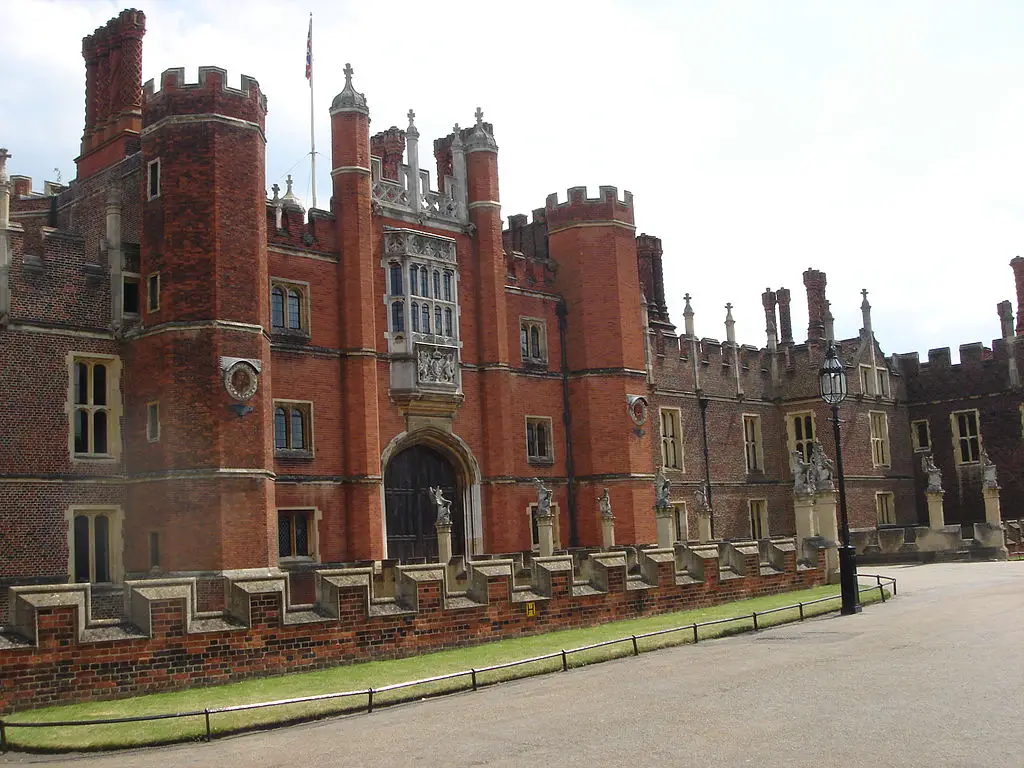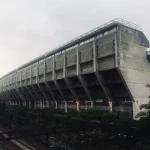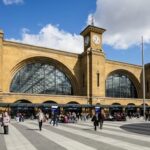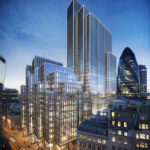Hampton Court Palace London Architecture, English Tudor Building, Date
Hampton Court London : Architecture
Tudor Palace Building in Middlesex, south east England, UK: Information
9 Feb 2010
Hampton Court Palace
Hampton, Richmond upon Thames, Middlesex
Largest and grandest of England’s Tudor Palaces
Built by Cardinal Wolsey in 1515
Address: East Molesey, Surrey KT8 9AU
Phone: 0844 482 7777
Hampton Court Orangery
–
Christopher Wren
Hampton Court Maze
Accessible in summer by boat from Westminster
Nearest Tube: Hampton Court, from Waterloo
Hampton Court Palace: 020 8781 9500
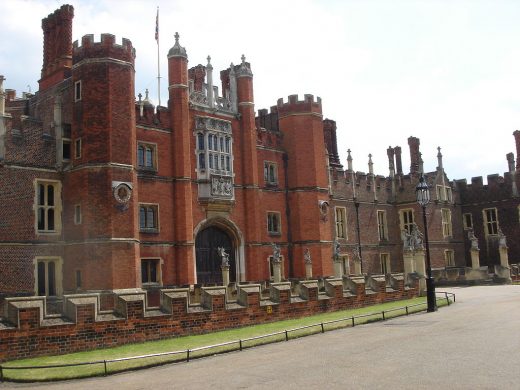
photograph : Daniel Newman at English Wikipedia [Public domain], courtesy Wikimedia commons
This is a royal palace in the London Borough of Richmond upon Thames, Greater London, in the historic county of Middlesex, and within the postal town East Molesey, Surrey; it has not been inhabited by the British Royal Family since the 18th century. The palace is 11.7 miles (18.8 km) south west of Charing Cross and upstream of central London on the River Thames. It was originally built for Cardinal Thomas Wolsey, a favourite of King Henry VIII, circa 1514; in 1529, as Wolsey fell from favour, the palace was passed to the King, who enlarged it.
The following century, King William III’s massive rebuilding and expansion project intended to rival Versailles was begun. Building work halted in 1694, leaving the palace in two distinct contrasting architectural styles, domestic Tudor and Baroque. While the palace’s styles are an accident of fate, a unity exists due to the use of pink bricks and a symmetrical, if vague, balancing of successive low wings.
Along with St. James’s Palace, this Tudor building is one of only two surviving palaces out of the many owned by King Henry VIII.
Today, the palace building is open to the public, and is a major tourist attraction, easily reached by train from Waterloo Station in central London and served by Hampton Court railway station in East Molesey, in Transport for London’s Zone 6. The palace is cared for by an independent charity, Historic Royal Palaces, which receives no funding from the Government or the Crown.
Apart from the Palace itself and its gardens, other points of interest for visitors include the celebrated maze, the historic real tennis court (see below) and the huge grape vine, claimed to be the largest in the world.
The palace’s Home Park is the site of the annual Hampton Court Palace Festival and Hampton Court Palace Flower Show.
Source: wikipedia
Location: Hampton Court Palace, London, England, UK
London Buildings
Contemporary London Architecture
London Architecture Designs – chronological list
London Architecture Walking Tours by e-architect
Palace Architecture in London
Buckingham Palace
The Mall, SW1
London Palace of HM Queen Elizabeth II
Built by the Duke of Birmingham in 1703
Buckingham Palace purchased in 1761 by George III
Buckingham Palace
Kensington Palace
west London
Christopher Wren, architect
Birthplace of Queen Victoria
Kensington Palace
St James’s Palace
Pall Mall, central London
1532
Built by Henry VIII
Birthplace of Charles II, James II, Mary II & George IV
St James’s Palace
Hampton Court Orangery: Christopher Wren
Royal Albert Hall, west London
Design: Francis Fowke, architect

image © Adrian Welch
Comments / photos for the Hampton Court Palace Architecture page welcome

